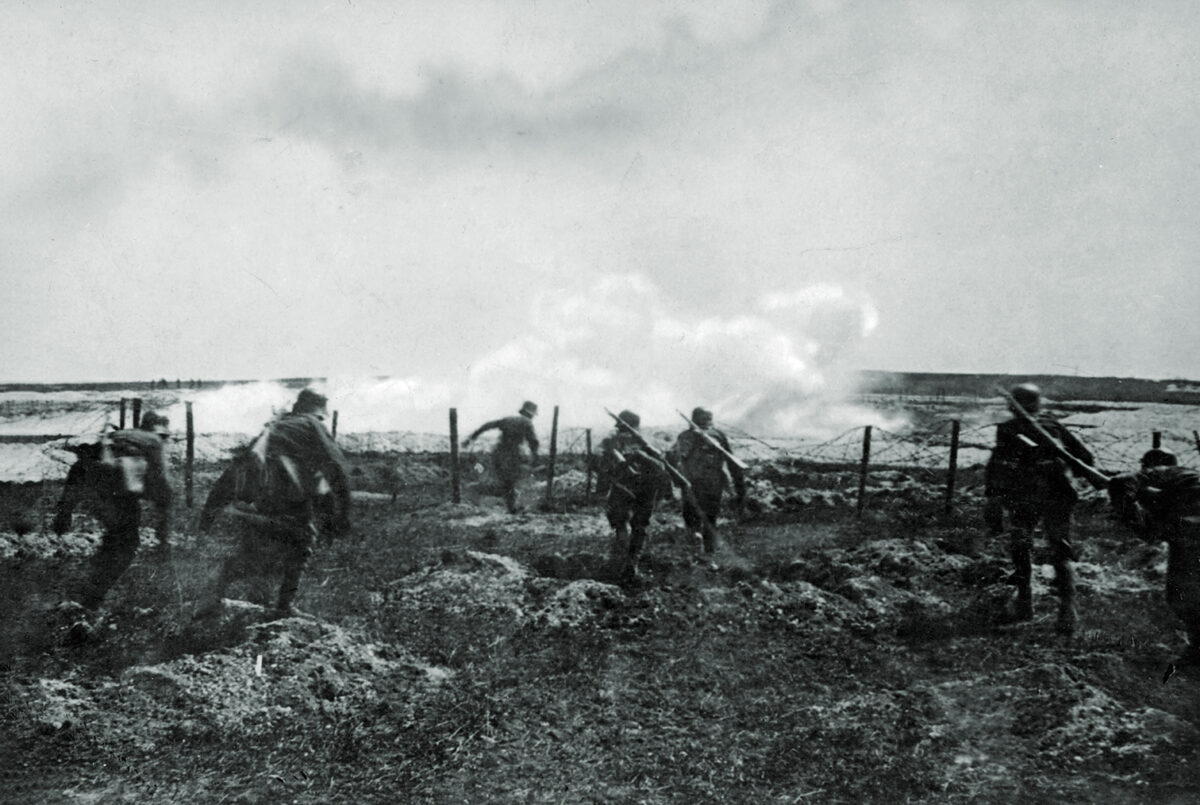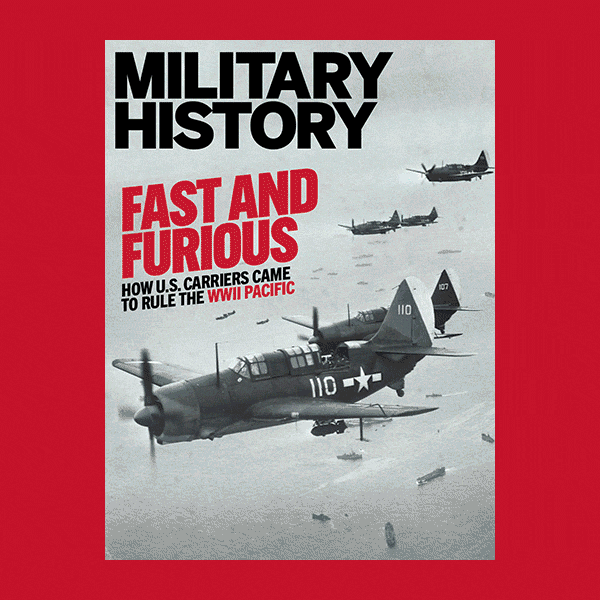On the strategic level the Battle of Riga, fought in Latvia on Sept. 1–5, 1917, effectively knocked Russia out of World War I. On the tactical level, however, Riga was even more significant. It marked one of the turning points in the history of warfare. The innovative offensive tactics tested by the Germans in that battle proved the key to breaking the long stalemate of trench warfare. After Riga no attack—or at least no successful attack—would ever again be conducted without some variation on those tactics.
It was a lightning offensive. On Sept. 1, 1917, the German Eighth Army, commanded by General of the Infantry Oskar von Hutier, made an assault crossing of the Dvina River (present-day Daugava) some 15 miles east of the city. The Russian Twelfth Army, commanded by General Dmitri Parsky, collapsed in short order. On September 3 German troops marched into the city, and by September 5 little stood between Hutier’s troops and the Russian capital at Petrograd (present-day St. Petersburg), 300 miles to the northeast.
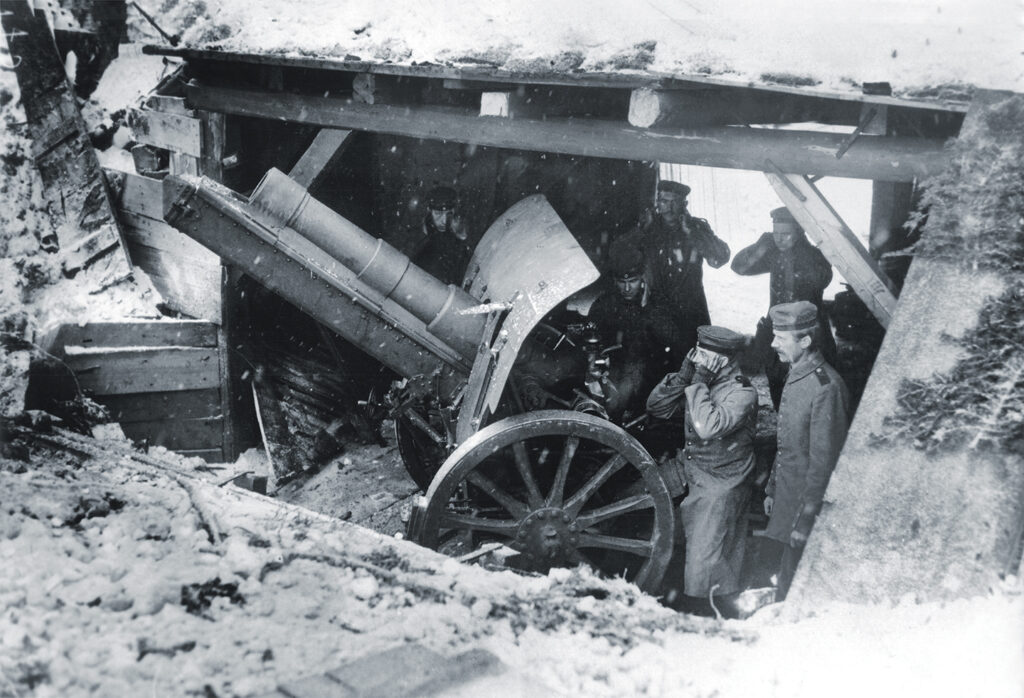
The empire of Tsar Nicholas II had been on the verge of collapse ever since Russia’s humiliating defeat in the 1904–05 Russo-Japanese War, and in March 1917 the provisional government of Georgy Lvov (succeeded in July by Alexander Kerensky) finally did replace the 370-year tsarist regime. Ober Ost, the German military command on the Eastern Front, sensed Russia was ripe for the kill. Ober Ost was then under the nominal command of Field Marshal Prince Leopold of Bavaria; but the real command was exercised by his chief of staff, the brilliant Maj. Gen. Max Hoffmann, the General Staff officer who had been the brains behind the German victory at Tannenberg in 1914. Hoffmann resolved to accelerate Russia’s collapse by striking at the old Hanseatic League port of Riga, on a namesake gulf of the Baltic Sea.
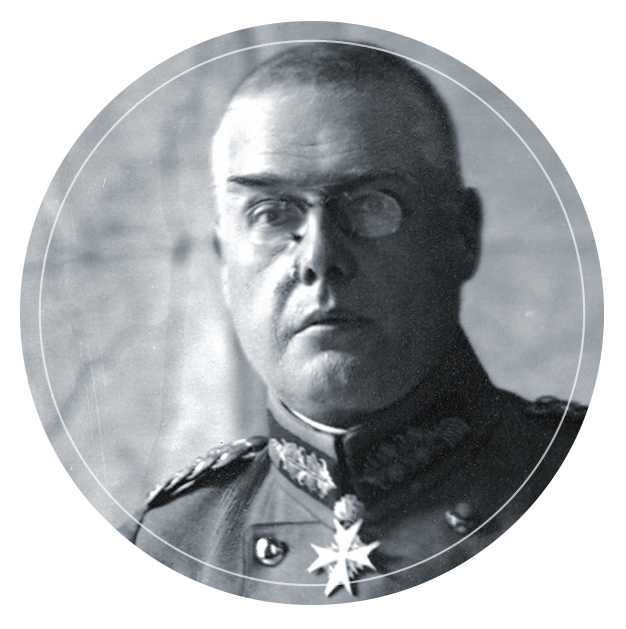
Hoffmann’s first move was to order his resident artillery expert, Lt. Col. Georg Bruchmüller, to conduct the preliminary reconnaissance and start fire-support planning for the crossing of the Dvina. In his memoirs Hoffmann deemed Bruchmüller an “artillery genius.” That may have been an understatement. By war’s end Bruchmüller proved central to the development of almost every tactical concept of modern fire support still practiced today.
Bruchmüller’s greatest innovation was the shift from artillery destruction fire to neutralization fire. Rather than trying to destroy everything in the path of the attacking infantry, Bruchmüller focused on tightly synchronizing the fire support and the infantry scheme of maneuver to neutralize the enemy defense just long enough for the attacking infantry to overrun it. He was especially innovative in the way he used combinations of persistent and nonpersistent gas to neutralize selected targets. Thus, while the typical artillery preparation in 1917 lasted a week or even two weeks, Bruchmüller’s preparations lasted only a matter of hours, with far better effect.
The Eighth Army’s infantry, meanwhile, was trained in an experimental attack doctrine the Germans would officially adopt in January 1918, itself a large-scale application of small-unit tactics that had been under development since late 1915. Captain Willy Rohr, the commander of Germany’s first unit of storm troops, was among its proponents and pioneers. Rather than advancing in the rigid, linear attack formations so characteristic of World War I, Hutier’s infantry was trained to advance using fluid infiltration tactics. The infantry companies were organized into small, highly trained combined-arms assault elements. Advancing leapfrog fashion, the small assault teams probed for weak spots and bypassed enemy strongpoints, leaving them for heavier follow-on forces to reduce. Reserves were committed to reinforce success rather than being thrown in where the attack had stalled. The assault teams pushed deep into the defender’s position, threatening his artillery and disrupting his communications systems. Rather than blind conformance with an established plan, the attackers down to the lowest-level leaders and even the individual soldiers were trained to use imagination and initiative to accomplish their missions.
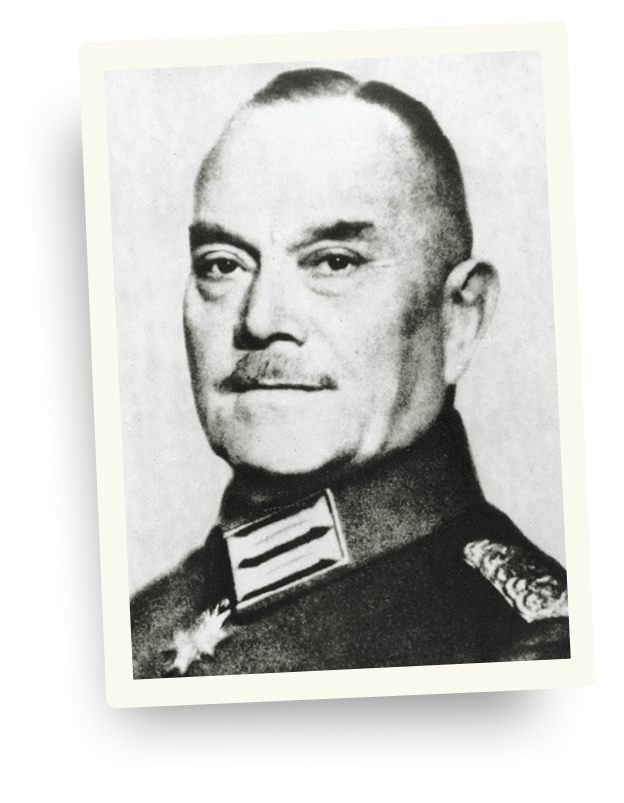
By the standards of World War I, these were radical innovations. At Riga the German army would conduct the first large-scale test of these “infiltration tactics,” often referred to incorrectly as “Hutier tactics” or “storm troop tactics.” Riga was also the first clash in which the new infantry assault tactics and Bruchmüller’s artillery tactics were combined and synchronized.
Defending the Riga sector were the Russian Twelfth Army’s 15 infantry divisions and single cavalry division, a force numbering some 192,000 troops. Russian defenses north of the Dvina were organized in two parallel positions. The first position comprised three, and in some places four, successive trench lines dug into the dunes along the river. The second position consisted of two sets of trench lines anchored along a smaller river the Germans called the Kleine Jägel (the present-day Maza Jugla), a few miles northeast of the Dvina. (The five-day clash is sometimes referred to as the Battle of Jugla.)
Facing the Russians opposite Riga, deployed along the south bank of the river, Hutier initially fielded just over seven divisions along an 80-mile front running from the coast southeast to Jakobstadt (present-day Jekabpils). Ober Ost reinforced the Eighth Army with an additional eight infantry and two cavalry divisions. That gave Hutier sufficient strength to make his main effort, conduct holding attacks against the front of the city and secure the rest of his line along the Dvina. Hutier planned to make his main effort a crossing of the Dvina near Üxküll (present-day Ikskile), some 15 miles downriver from the city. He committed 10 divisions of about 60,000 troops to the crossing. Once across the Germans could maneuver around to the rear of the city and cut off the Russian garrison.
Hutier prepared for the offensive by assembling his attack divisions some 80 miles behind his front lines, where they trained and rehearsed for 10 days. The attacking divisions did not move up into their jump-off positions until the night before the attack. At 0910 hours on September 1 three divisions of Hutier’s LI Corps spearheaded the attack on a 10,000-yard front. The 19th Reserve Division, on the right, and the 2nd Guards Division, on the left, forced a crossing of the Dvina with assault boats and pontoon bridges. The 14th Bavarian Division in the center had to take heavily fortified Borkum Island as an intermediate objective. Once across the river the three divisions quickly overran the Russians’ first defensive positions and moved on toward the second. While the lead German elements were advancing on the second position, German pioneers started building fixed bridges across the river in each of the three divisional attack sectors. Once the bridges were up a second division crossed behind each first echelon division and prepared to exploit the breakout from the Russians’ second defensive positions.
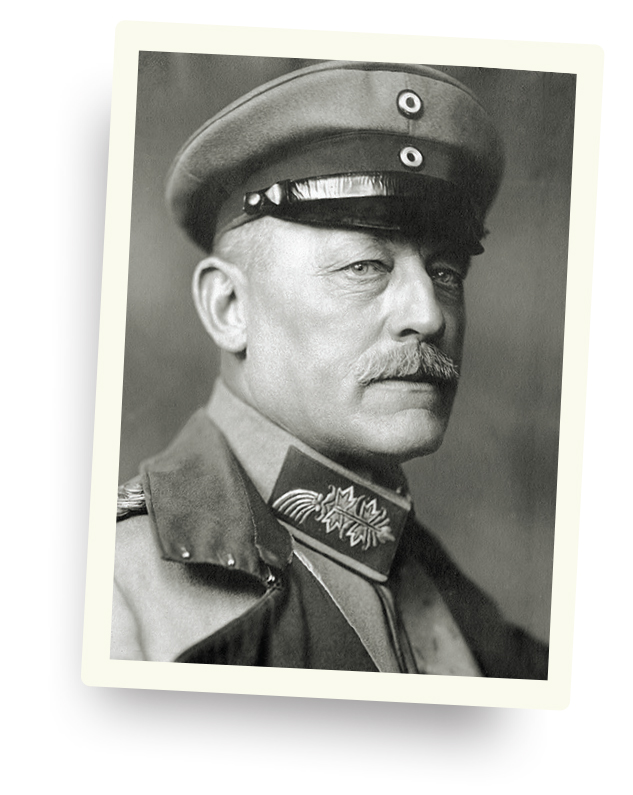
In addition to the extra infantry divisions, Ober Ost had given the Eighth Army massive artillery reinforcements by stripping the Eastern Front of everything but the minimum number of guns necessary to hold the line in the other sectors. Some guns were even transferred in from the Western Front. With painstaking secrecy Bruchmüller supervised the movement of 615 guns (including 251 heavy guns) and 544 trench mortars into the 5-mile-wide penetration zone prior to the attack, achieving a density of 68 guns and 60 trench mortars per thousand yards. He also stockpiled 650,000 rounds of ammunition at the battery positions.
Once they moved into position, the newly arrived batteries refrained from giving themselves away by firing registrations before the start of the attack. Instead, they fired abbreviated registrations on preplanned points during the first two hours of the preparatory barrage, then quickly shifted fire onto their scheduled targets. While not the most accurate method of firing, it worked. The German artillery achieved total surprise against the Russians. Stunned Western Allies who later analyzed the battle concluded incorrectly the Germans had perfected an accurate technique for delivering unobserved fire without prior registration. (Bruchmüller would manage to do exactly that in March 1918.)
One reason accuracy was not quite so important was the unprecedented high number of chemical rounds fired. Rather than attempting to blanket the Russian line with gas, the Germans fired specific types of chemical munitions at selected targets to achieve precise results. Throughout the entire length of the fire the German guns and mortars fired an average of 500 gas rounds per minute on key targets in the penetration zone.
Bruchmüller’s preparatory barrage lasted five hours and 10 minutes. Though short by World War I standards, it was incredibly violent. At 0400 hours all 615 German guns opened up against the Russian artillery positions, firing 75 percent gas to 25 percent high explosive. After two hours of this reinforced counterbattery fire those German firing units with a specific counterbattery mission continued to pound the Russian artillery, while the rest of the German guns shifted to Russian infantry targets and started firing 20 percent gas to 80 percent high explosive. At that point the short-range trench mortars joined in, concentrating their fire on the Russian frontline positions.
The fire against infantry targets lasted three hours and 10 minutes and was divided into four phases. At 0850 hours, 30 minutes into the last phase, the counterbattery guns also shifted to the Russian infantry positions, leaving only one gun per battery to continue stoking the gas clouds enveloping the Russian guns. This final 20 minutes of the preparation was a saturation of the Russian front lines, with all guns and trench mortars firing at their maximum rates of fire. Although gas had been used on the World War I battlefields as early as January 1915, it had never been used with such precision and exacting effect. As British strategist Maj. Gen. J.F.C. Fuller later wrote in The Conduct of War, 1789-1961, “The first skillful use of gas to effect a penetration was made in General von Hutier’s attack on the Riga front.”
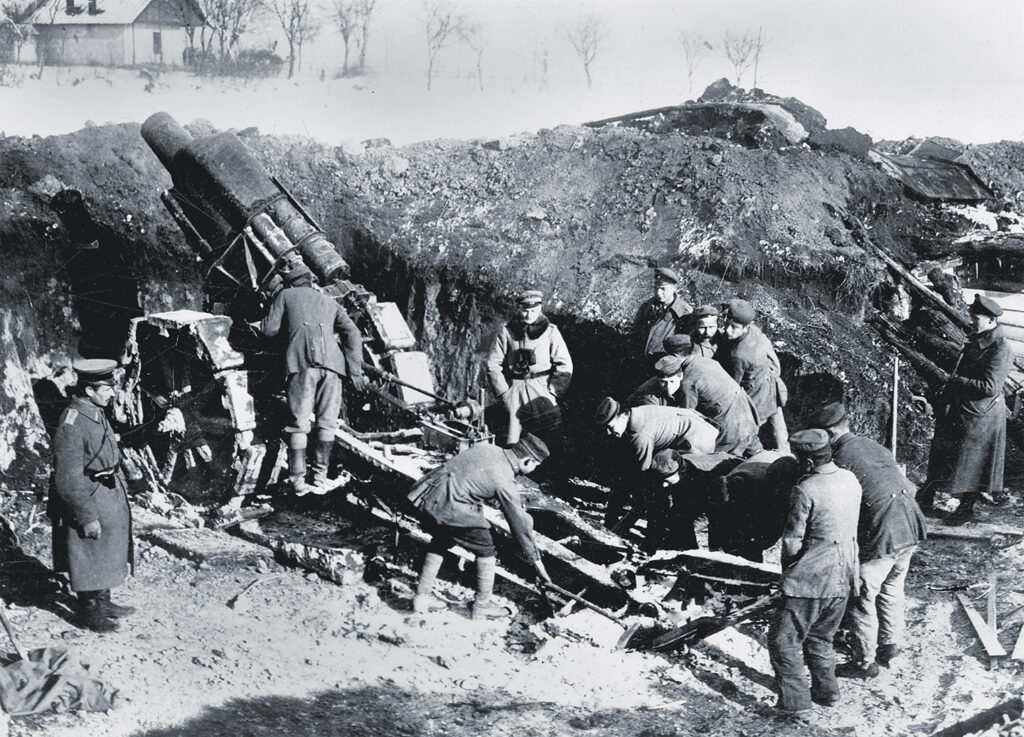
At 0910 hours the German infantry surged across the river. Forward observers accompanying the assault elements crossed with the first wave after tying down their phone lines to prepositioned stakes at the ferry points. Once they were across, the assault from the north bank was preceded by a carefully orchestrated creeping barrage. With the exception of the one gun per battery still firing on the Russian gun positions, the German counterbattery guns continued to fire on deeper infantry targets during the first two phases of the creeping barrage.
As soon as the first wave of German infantry had firmly established itself on the north shore, the counterbattery guns turned their attention back to the Russian batteries. About that time the Germans put a number of light field guns across the river on rafts. In the days prior to the attack Bruchmüller’s gunners had rehearsed this technique on the lakes in the Eighth Army’s rear area. Meanwhile, specially trained detachments of gunners from the heavy artillery units crossed the river to take over any abandoned Russian guns in the forward positions. The bulk of the heavier German guns remained throughout the first day on the south bank of the river, having sufficient range to engage the Russian second positions.
Once the Russians’ second defensive positions were overrun, the Germans executed three successive programs of planned defensive fires. The first program provided cover from the time the Russian second defensive position fell until the completion of the fixed bridges over the Dvina. Once those bridges were completed, the Germans moved more artillery across. The second program of defensive fires ran from the completion of the bridges until the artillery that moved across got into position and registered. Once that was accomplished, those guns took over the third set of defensive fires that lasted until everything was ready for the start of the exploitation phase from the Russian second position.
The effects of the German fire were devastating. During the slightly more than five hours of the preparation alone the German gunners hit the Twelfth Army with more than 560,000 rounds—an average of 480 rounds per tube. Any artillery crewman who has ever manhandled ammunition will testify to the backbreaking nature of such a sustained rate of fire. Some 27 percent of the total rounds fired were gas, the highest proportion of such rounds fired in any battle of the war to that time. The total weight of the high explosive shells fired came to approximately 10,500 tons—the equivalent of the armament payload of 300 present-day Boeing B-52H Stratofortress bombers.
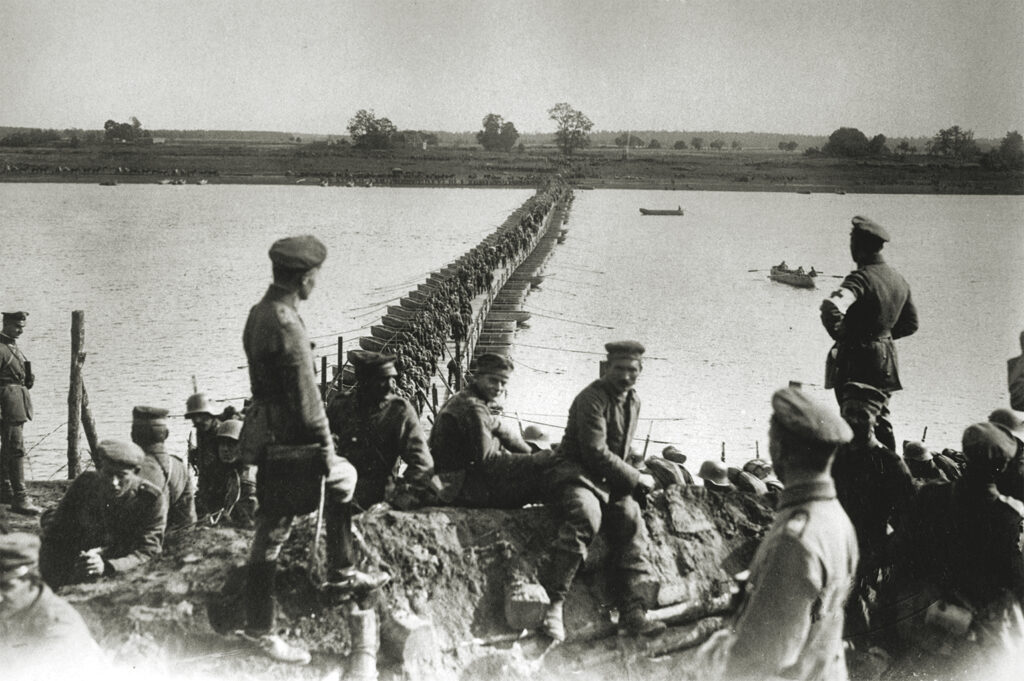
Three hours after the first assault wave crossed the river, the Russians started to break. Late that afternoon Twelfth Army commander Parsky ordered his XLIII Corps to counterattack with four divisions and the Latvian 2nd Rifle Brigade. By nightfall, however, the Germans had six divisions across the Dvina, with a bridgehead 8 miles wide. Early on September 2 the Russian counterattack force took up positions along the Little Jägel. The Germans responded with a heavy artillery barrage followed by an attack supported by flamethrowers and ground attack aircraft. The Russians and Latvians managed to hold out for about 24 hours, while the remainder of the Twelfth Army started evacuating Riga.
After the Germans fought their way across the Little Jägel, one part of the attack force broke off to the west and advanced on Riga itself. They entered the city with relatively little opposition in the afternoon of September 3. Simultaneously a German naval force broke through a Russian minefield at the mouth of the Dvina and approached the city from the river. The remainder of Hutier’s force kept pressing northeast, reaching the Grosse Jägel (the present-day Liela Jugla) by day’s end. Neither arm of the German advance, however, managed to prevent the bulk of the Twelfth Army from escaping.
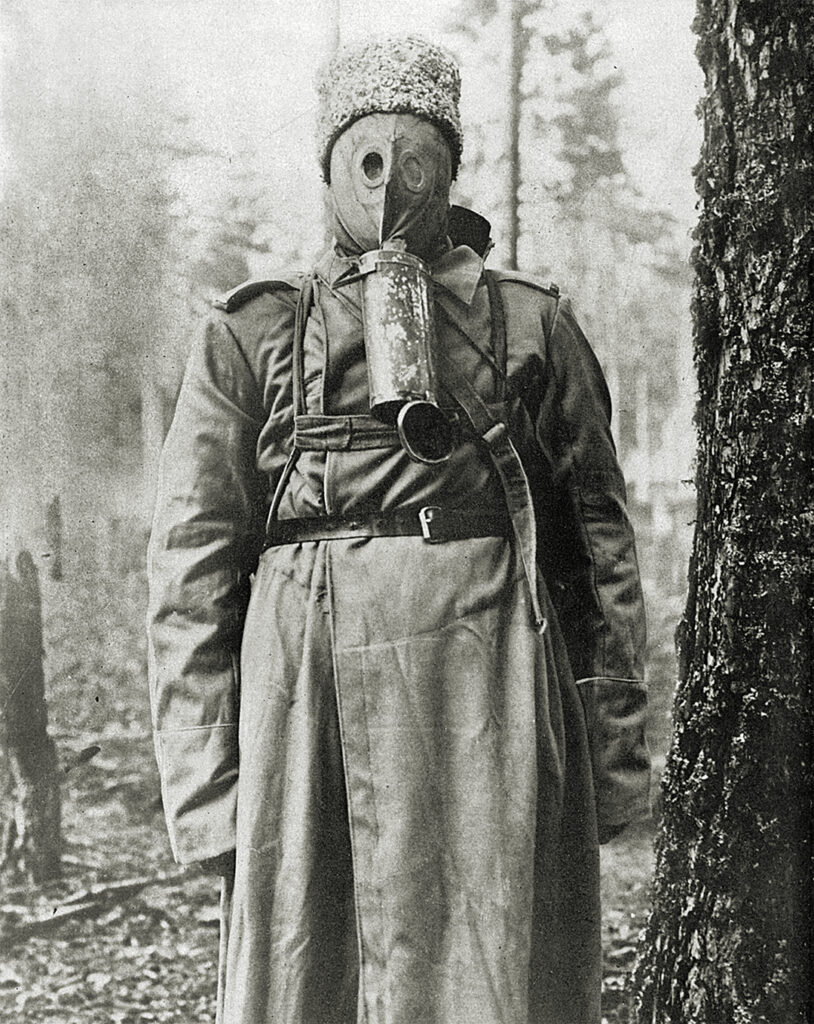
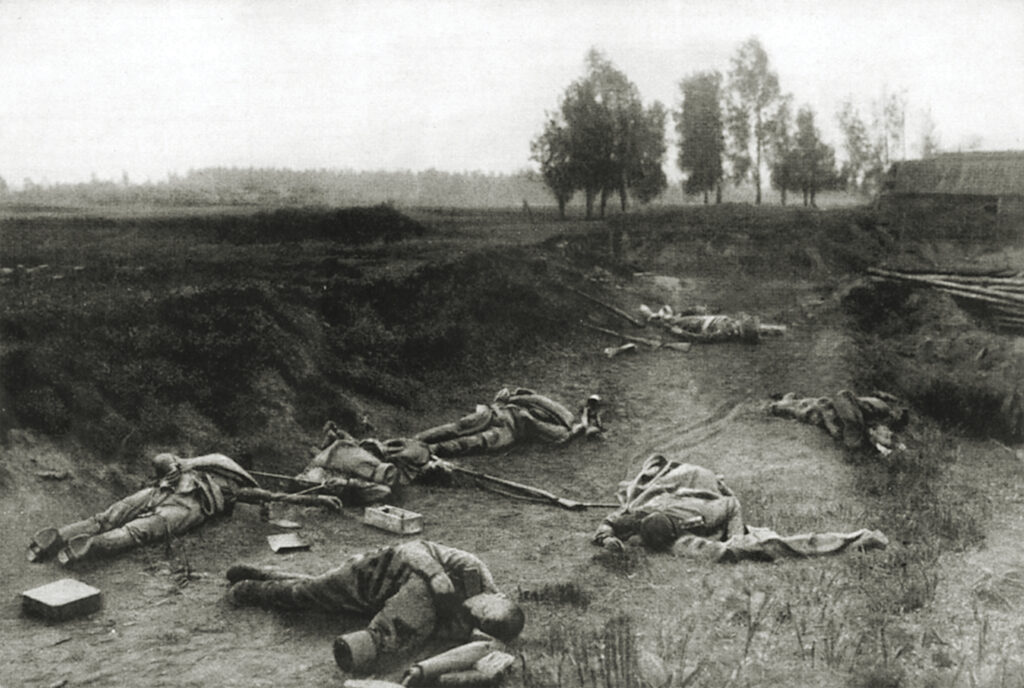
The German attack ended on September 5. The operation had cost the Germans 4,200 casualties to Russia’s 25,000. The Russians also lost some 180 guns and 200 machine guns. After Riga fell, Russia also lost whatever stomach it had for staying in the war. The Bolshevik revolution overthrew Russia’s provisional government on November 7 (October 25 on the traditional Russian calendar). Four days earlier Leon Trotsky had issued a series of demands in the name of the Petrograd Soviet, which included “immediate armistice on all fronts.”
With Trotsky and Vladimir Lenin in Petrograd, and things destabilizing very nicely, Germany had no real incentive to continue large-scale military operations against Russia. It had bigger fish to fry. Thus, most of Ober Ost’s effective combat forces were transferred to the Western Front, where General Erich Ludendorff was planning his grand 1918 spring offensive, which he was convinced could still win the war for Germany.
The transfers to the Western Front included Hutier and Bruchmüller and their staffs. Hutier assumed command of the newly established Eighteenth Army, one of three armies that launched the massive Operation Michael on March 21, 1918. All the German forces in that operation employed the tactics that had proved so successful at Riga, and Bruchmüller planned and oversaw the greatest artillery barrage in the history of warfare to that point. Hutier was awarded the Pour le Mérite for his capture of Riga. Bruchmüller had already received the decoration for previous service on the Eastern Front. Both would receive the higher-level Pour le Mérite with oak leaves for their roles in Operation Michael. (The Pour le Mérite with oak leaves was awarded only 122 times during World War I.)
Like the Battle of Riga, Operation Michael was an overwhelming tactical success, but unlike Riga, Michael was a strategic failure. All the battlefield virtuosity the Germans could muster was not enough to overcome the decisive strategic advantages of the Western Allies. The Germans were simply out of manpower. The Americans had just entered the war, and by March 1918 they were pouring more than 100,000 troops per month into Europe. The French and British, however, did receive a bloody nose in March 1918, as the Germans took more ground in less time than almost all of the previous Western Front battles combined. The Germans followed up with similar massive offensives in April, May and July. But though they kept taking ground and inflicting high casualties, it was not enough to tip the balance in the bloody calculus of World War I.
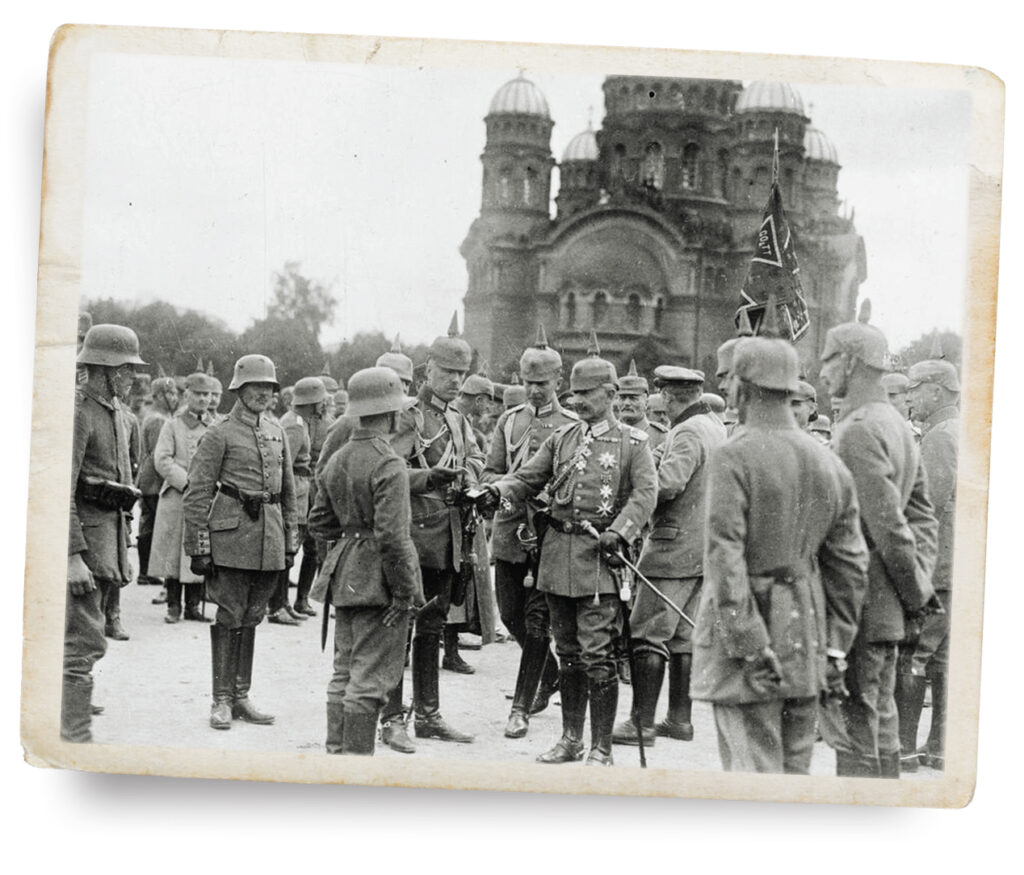
The Allies, meanwhile, learned their lesson quickly. By July 1918 they too were using the same sort of flexible combined-arms tactics the Germans had pioneered at Riga. The stalemate of trench warfare was finally broken. The Russians learned the lessons of Riga as well, but too late to do them any good in World War I. Between the world wars, however, Soviet military theorists scrutinized German military operations during World War I and developed their own tactical techniques and procedures based on the same fundamental principles. They paid special attention to Bruchmüller, who in the 1920s wrote two books about his experiences, which included detailed information about the fire planning for Riga. Lieutenant General Yuri Sheydeman, chief of the Red Army’s artillery from 1921 to ’37, personally translated one of Bruchmüller’s books from German into Russian. Most of Bruchmüller’s fire-support principles and techniques were echoed in the 1937 edition of Artillery Training Regulations of the Red Army, the basic manual of Soviet artillery doctrine for World War II. Between 1941 and ’45 the Soviets on a hundred battlefields paid back the Germans for Riga in their own coin.
Retired U.S. Army Maj. Gen. David T. Zabecki is Historynet’s chief military historian. For further reading he recommends his own Steel Wind: Colonel Georg Bruchmüller and the Birth of Modern Artillery, as well as Russia’s Last Gasp: The Eastern Front 1916–17, by Prit Buttar.
This story appeared in the 2023 Summer issue of Military History magazine.
historynet magazines
Our 9 best-selling history titles feature in-depth storytelling and iconic imagery to engage and inform on the people, the wars, and the events that shaped America and the world.


